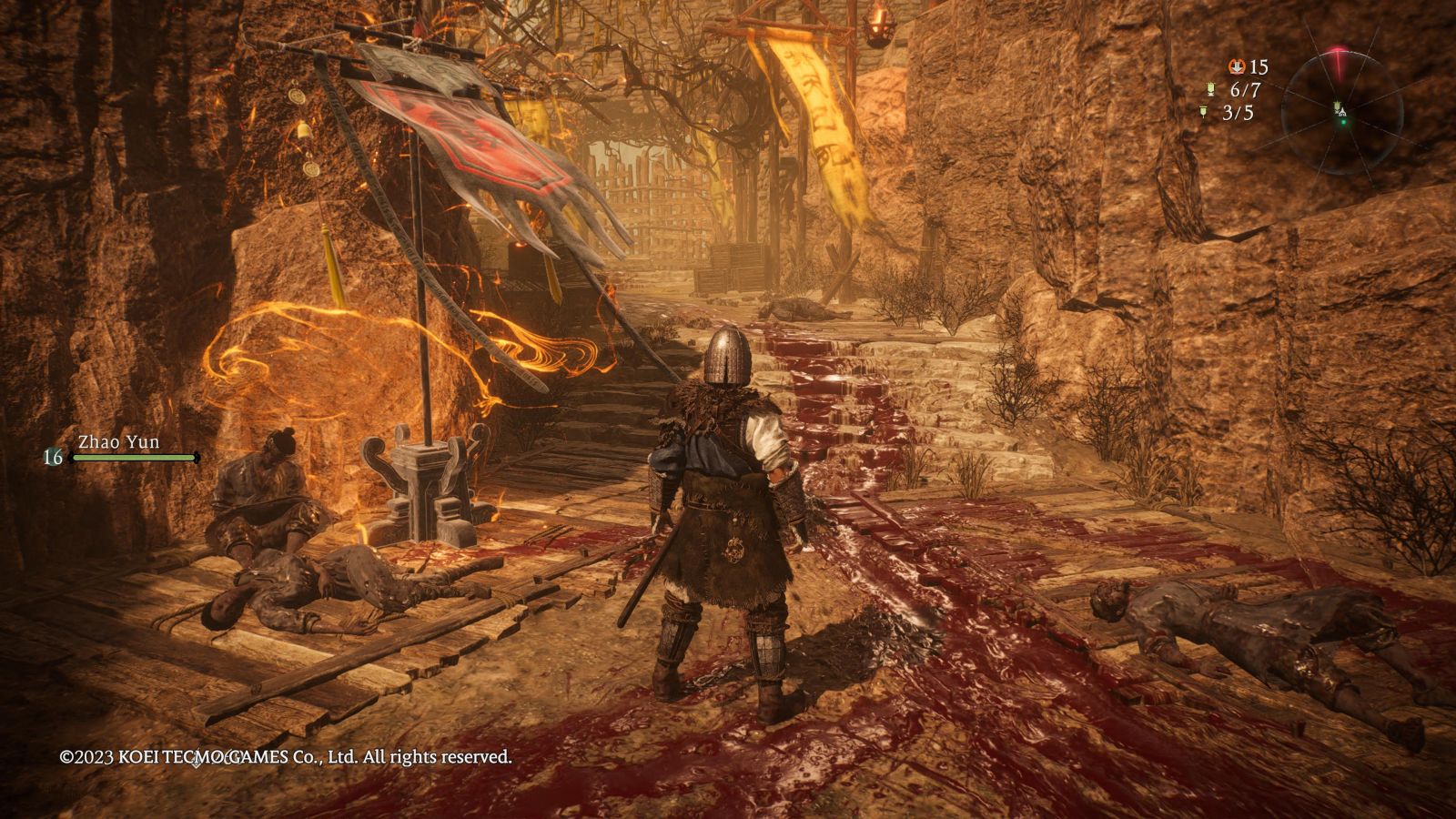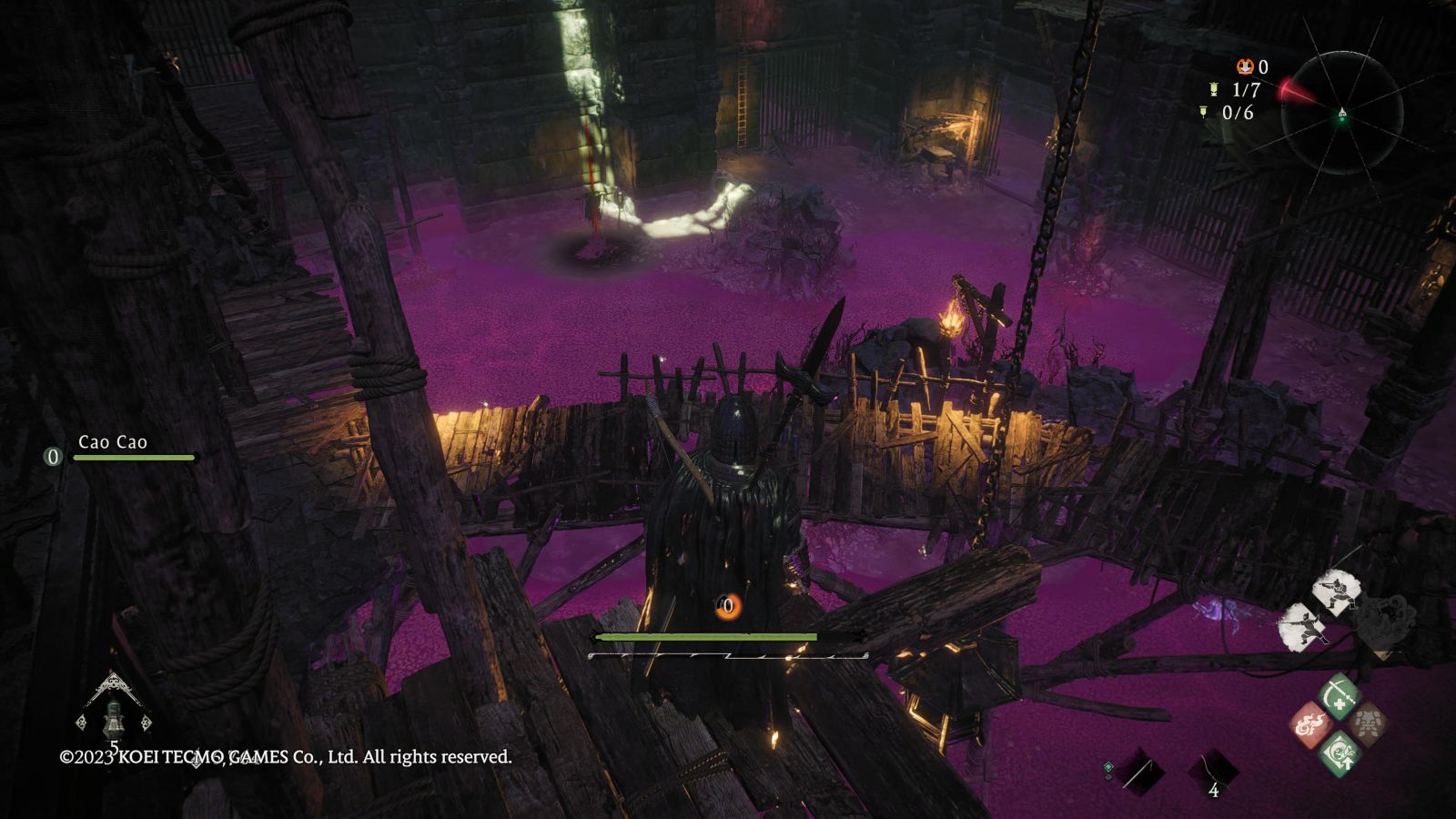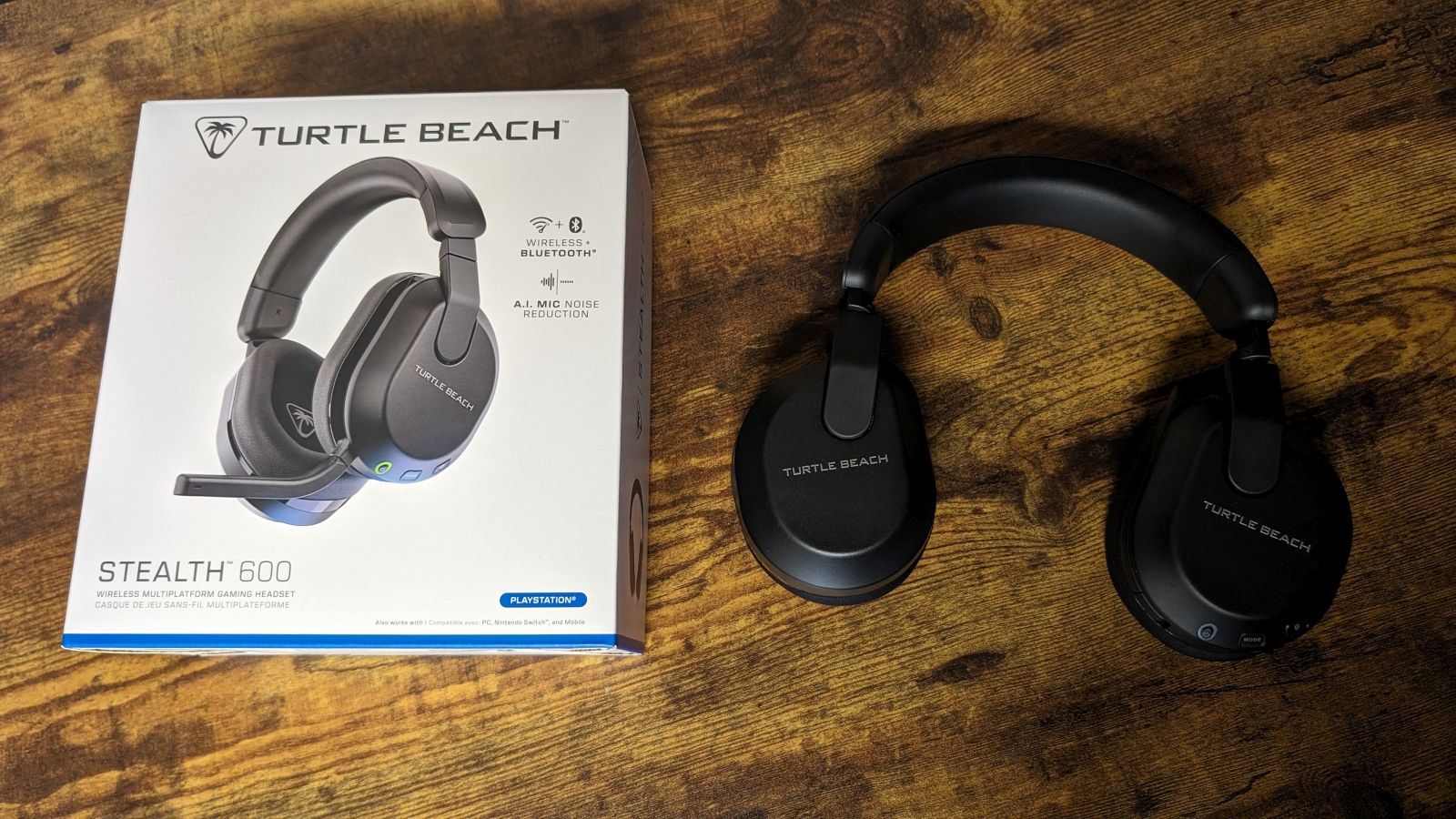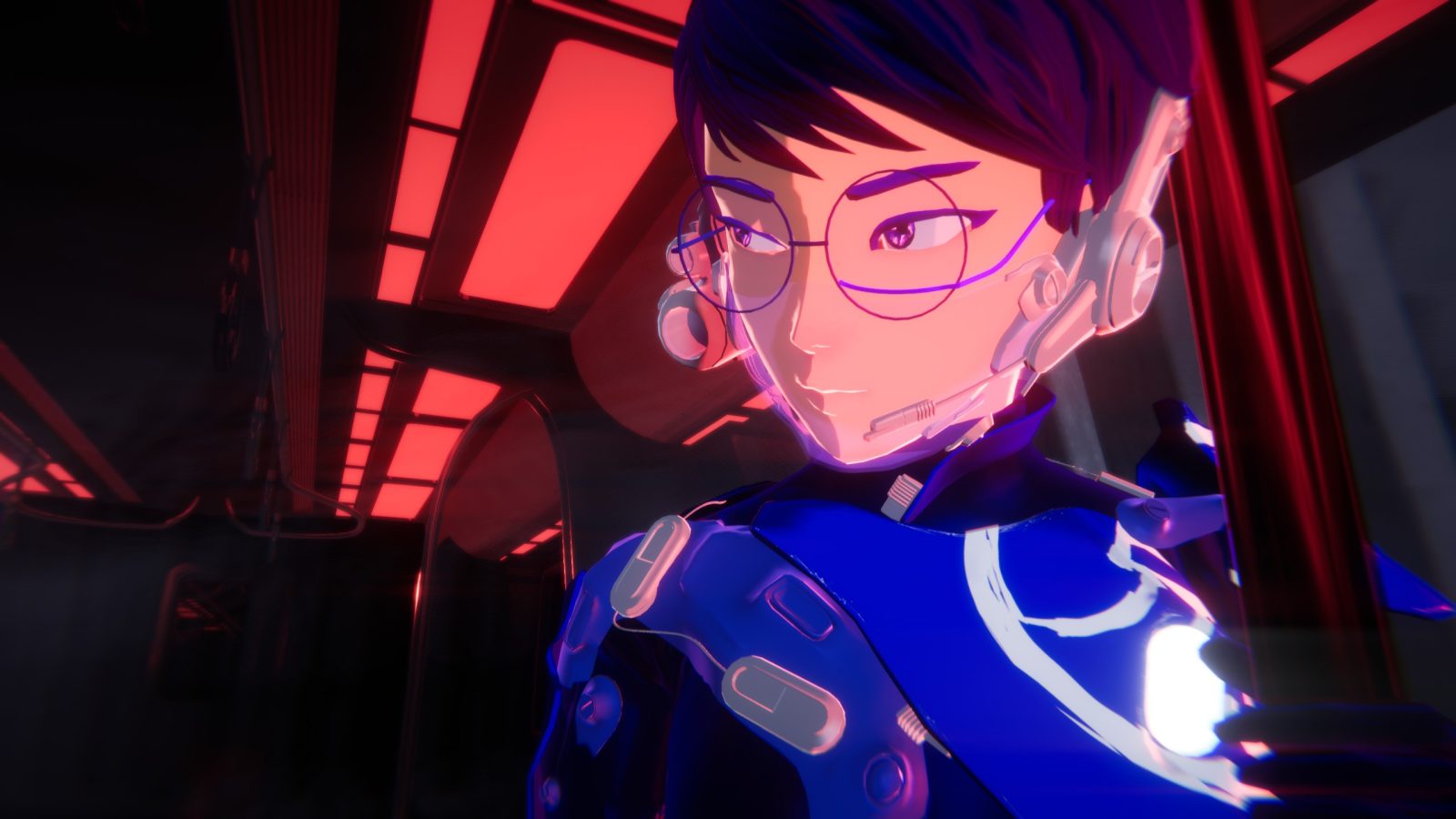Wo Long: Fallen Dynasty is a rarity; a new IP that oozes quality, has a distinct personality, is brutally challenging while remaining fair (mostly), and has so much to discover and so many opportunities to team up with others that players will be scouring the battlefield long after the main missions are completed. Wo Long is a near perfect blend of Team Ninja’s incredibly fast paced action mixed with a smattering of Souls-esque gameplay ideas to create what is sure to become a classic. Wo Long is not an easy game, nor is it a short game, but please believe me when I say that it is worth the nearly forty hour time investment.
Unlike traditional action games, Wo Long does not award aggressiveness, in fact, it punishes it. This is a game for those with patience. Wait for the right time to strike, conserve your energy, plan your attacks – avoid rushing headfirst into a fight, even with bosses. Even two enemies at once can take down a hardened warrior. Timing is everything, and so is mastering the deflect system. Like all the best Souls games, you learn from trial and error. You will die a lot, but death is merely a stepping stone to mastering the combat.
That said, there is a fine line between being challenging and frustrating, and the beginning of the game tiptoes that line in dubious fashion. I suspect a large amount of players will rage quit before seeing the title reveal and beginning the game proper due to the tutorial level and its two part boss. This is a shame, as once you get past the initial missions there is so much to experience and so many ways to level up, obtain new gear, find help, etc., that you’ll rarely encounter a fight as downright frustrating as the beginning challenge.


When beginning Wo Long you’ll find a fairly robust character creator, which has never been my thing, but should please most players wanting to create a distinct warrior. After creating your character, you’ll immediately hop into the game, which is broken down into parts, with each part including Main Battlegrounds and Sub-Battlegrounds. The overall mission structure is similar to Nioh, with the Main Missions required to progress and the Sub-Missions optional, though I highly recommend you tackle the Sub-Missions if you want a chance at completing the game with the least amount of frustration. Sub-Missions are a great way to level up and to obtain items required to upgrade your weapons and armor.
Missions open up gradually, with Sub-Missions popping up a few at a time after every Main Mission. Sub-Missions vary between simple duels to decent length levels and are a welcome break from the main story missions and allow for small moments of character growth, helping to flesh out the many individuals you fight alongside during the campaign. One late game mission involves helping someone find their drunken master who got lost during a bender, while other missions involve light-hearted sparring with your friends. I enjoyed every Sub-Mission and was glad for their inclusion.
The story is fairly simple, though sufficiently epic to push the game forward. Betrayals occur, enemies become friends, new threats arise, but it all revolves around a mysterious elixir which gives individuals incredible power, which they then use to dominate the battlefield. You and a merry band of warriors you’ll meet along the way must work together to stop the threat. It’s nothing to write home about, but takes place over many years and pushes you to a variety of locations, helping to keep a long campaign fresh with new sights and enemies throughout.
Unfortunately, your character is a silent protagonist, which is a detriment to the more emotional aspects of the story and makes for many awkward scenes where characters speak directly to you and essentially your character stares blankly at them. There is a time and place for silent protagonists, but Wo Long’s story would have greatly benefited from having a protagonist that at least spoke occasionally. Still, cutscenes move quickly and no conversation lingers long enough for the player to dwell on this too much, as there is rarely a break in the action.


While your character may be silent, the same can’t be said about the wonderfully diverse group of characters that you’ll meet and fight alongside throughout the campaign, all of which have their own motivation for joining the crusade and can later be called on as reinforcements (more on that later). I enjoyed meeting these characters, learning their stories, and watching how all their lives intertwine as the overarching story became more complex. Despite moments of tension and scenes of bloodshed and terror, there is levity and a humanity brought by many of these characters who show compassion, bravery, and vulnerability as the stakes become more dire. By the end you’ll find yourself surprisingly engrossed in this good vs. evil tale.
As expected, you will begin the game fairly ill-equipped, with three dragon cure pot uses – which refills your health, a couple of low-powered weapons, and some light armor. As you progress you will find accessories to increase your attributes and materials to upgrade your equipment, including steel and leather of various ranks which can be found hidden throughout levels or as rewards for completing a mission. Dragon vein crystals are cleverly hidden in a few missions and will increase the number of dragon cure pot uses you have, while there is also an item to increase the potency of each drink. Leveling up your gear is a must, as otherwise the damage you’ll deal to threats will quickly become insignificant.
To upgrade, you’ll need a blacksmith – and just your luck, there’s a traveling blacksmith which can be found near save points. The blacksmith will allow you to embed new attributes in your items, salvage items for scrap, sell you new items, buy your extra items, and allow you to decorate your item to mimic another item while retaining its attributes. Thankfully, having to search for the blacksmith each mission doesn’t last for long as eventually a hub world of sorts opens and the blacksmith will permanently settle there, along with a variety of other NPCs who have stories and mini-goals you can complete to learn more about them.
The first thing you’ll notice about Wo Long’s levels are that they are massive. Like other Souls-like games, missions have sprawling level design, with areas which can be skipped over entirely and shortcuts to uncover. Despite the large, maze-like, and often multi-tiered level design, there is always a good sense of where to go next, but most players will find themselves going off the beaten track at every opportunity to seek out hidden treasures, difficult optional encounters, and the coveted dragon vein crystals.


As expected from a Team Ninja project, Wo Long: Fallen Dynasty’s combat is brutally fast and nuanced, with fights often delving into beautifully choreographed chaos. The combat is both simple to learn and complicated to master, sure to confuse players at the outset but does begin to become second nature as you progress. This is not a game which you can frantically smash buttons and hope to survive, although you can get by with mainly learning the basics of the deflection and fatal strike systems if learning wizardry spells and the like are not really your play style.
But I am getting ahead of myself; let’s talk about the combat basics and the tools at your disposal. There are 13 melee weapon categories and bows/crossbows, with each weapon boasting its own unique play style. Swords and sabers are the standard weapons, quick and easy to use. Spears have a long reach and are relatively quick, although there is a bit of wind up compared to a standard sword. Halberds and glaives are heavy and extremely dangerous, but able to take out multiple enemies at once. Staffs are short with quick attacks, but you can use spirit to extend the reach (more on spirit in a bit). Hammers and poleaxes are extremely heavy and slow, but cause massive damage. Finally, you can dual wield swords, halberds, and sabers for quick combos. Each category has multiple weapons available to find and use.
Despite the multitude of choices, if you’re anything like me you’ll find a weapon early on and stick with it, even if it is to your detriment. I become unhealthily attached to starting weapons, and as such I completed the campaign using the starting sabre, although I did switch it out with higher ranked versions and put a ton of effort into leveling it up to appropriately match the challenges I faced. I did mess around with other weapons from time to time, but after spending so much time with one particular weapon, I had a hard time adjusting the timing of my attacks to correspond with the other weapon’s swing times. That said, you are able to wield two weapons at once and switch between them with ease. Thankfully, Wo Long encourages experimentation, and weapons do not affect your equipment weight, so you can switch between a sabre and hammer at will if you so choose, without losing any flexibility in your movement.
The same can’t be said about armor, which does affect your equipment limit and will hamper your ability to dodge or deflect effectively. Early on it may be best to focus on leveling up your Earth Virtue attribute to have access to more effective equipment. There is a wide variety of armor, helmets, grieves, and gauntlets to find, and those who love the Souls series for their fashion will find a good bit to love about Wo Long as well. You are able to upgrade all parts of your armor and decorate your armor to change its appearance, so I suspect many will spend quite a bit of time perfecting their looks.


Fighting comes down to normal attacks, spirit attacks, martial arts, deflection, fatal strikes, and wizardry spells. Basic combat will consist of using normal attacks along with deflecting, which allows you to deflect an incoming attack and automatically lines you up for a blow. The attack and deflect flow is essential to survival, and is the only real way to defeat many of the more powerful enemies. Especially important is learning how to deflect enemy and boss critical blows, which are indicated by a flashing red icon on the enemy. Deflecting stuns them for a moment allowing you to use a spirit attack or a flurry of regular attacks to negate the enemy’s spirit gauge, which in turn will open the enemy up to a fatal strike, which deals massive damage and can quickly turn the tide of battle. It is a system that seems simple enough on paper but becomes far more nuanced as you progress, as each enemy will have their own types of critical strikes, their own move set, and timing which you must master.
You gain spirit as you attack enemies and deflect attacks, building up your spirit gauge which can then be used to deflect or launch a spirit attack, wizardry spell, or unleash a weapon’s martial art skill. You will lose spirit by taking damage or gradually between fights. Spirit attacks are powerful attacks which deal far more damage than a normal attack and shrink the enemy’s spirit gauge, moving them a step closer to being open to a fatal strike. Martial arts are special abilities attached to each weapon and can penetrate an enemy’s guard and cause massive damage. Wizardry spells are based around the five phases which you can level up and range from fire and frost projectiles, to added defense or health regeneration per hit. There is an incredible amount of diversity within the available wizardry spells, with four unique spells able to be equipped at any given time. Wizardry spells are best used to buff yourself or party or to combat enemy attacks by using the opposite element against the enemy. For example, using frost against an enemy’s fire attack.
As you progress you will gain the use of divine beasts from the individuals you fight alongside, which can greatly turn the tide of battle. One divine beast can be equipped at a time and has its own gauge, which accumulates as you deal or take damage, perform fatal strikes, or defeat enemies. There are two ways to unleash a divine beast: using their special attack or using their strength to obtain various boosts for a short period of time. There is a wizardry spell to speed up the time it takes to accumulate the divine beast gauge and heading into battle with a full gauge can quickly help you gain the upper hand in a tough battle.

While it may seem like there is a lot to learn about the combat system – and granted, there is – it is still much simpler than it appears at first glance. Mastering deflecting attacks and when to use spirit attacks will help you survive much of the game, while equipping a few wizardry spells will help level the playing field against magical enemies or tough boss battles.
Further complicating matters is the morale rank system, which determines the damage a player receives from enemies and determines various other factors in battle. You begin each mission with a morale rank of zero and gradually increase the rank through defeating enemies and using the various attack options at your disposal along with raising flags. You can increase your morale rank up to a maximum of 25 per mission. Enemies each have their own morale rank, indicated by a number over their head and color coded, to help you easily determine which enemies are threats and which should be easily defeatable. A morale level ranked in green means that the enemy is equal to or at a lower morale rank level than the player, while yellow means they are within 4 levels of the player, and red means they are five levels higher and a much greater threat. Your morale will continue to rise as you defeat enemies, provided you do not die. Upon death your morale will revert back to your current fortitude rank.
Your fortitude rank increases with each battle flag and marking flag raised. Battle flags serve as a place to rest, level up, purchase supplies, prepare for battle, call for reinforcements, enter the online lobby, and more. Each level has a varying number of battle flags and marking flags, indicated by numbers in the top right corner. Battle flags will also refill your dragon’s cure pot and respawn all defeated enemies, while marking flags will refill your health but will not replenish your supplies and cannot be rested at. Each time a flag is raised your fortitude rank will increase, thus increasing the morale rank you will begin with upon death. Battle flags are sometimes uncontested and easy to reach, while others are guarded by a high-powered enemy or enemies which must be defeated before it is able to be used.
Speaking of leveling up, you do so by defeating enemies and gaining genuine qi which can then be spent at a battle flag to raise one of five attributes: Wood, fire, earth, metal, and water. These attributes increase your health, defense, equipment limit, spirit gauges, and more. Dying results in you losing half your genuine qi, which must then be reobtained by defeating the enemy who killed you. Enemies who deliver the death blow also gain a morale rank level, making them slightly harder when being rechallenged.
Wo Long has an impressive variety of enemies, each with distinctive fighting styles and timings to learn. From human soldiers, to flying monstrosities, to grotesque water creatures, to large animals, nearly every area will sport a new type of enemy along with updated or tougher versions of older enemies. In some instances, there are leaders, indicated by a red triangle over their head, which are supported by followers, indicated by a white triangle. Defeating a leader will lower enemy morale of all followers, making them easier to dispatch.
Boss battles are plentiful and appropriately challenging. Bosses come in all shapes and sizes, and each has a distinct learning curve you’ll contend with before you can obtain a victory. Battle flags are normally generously placed near boss battles, allowing you the ability to tackle the fight continuously, which is nearly a necessity as you learn the proper techniques needed to overcome the challenge. Thankfully, there are a variety of ways in which you can obtain help, including recruiting online strangers, teaming up with a friend, or calling on reinforcements from the individuals you’ve helped throughout the campaign.
Let’s start with explaining reinforcements. Much of the time in Wo Long you will fight alongside NPCs which will help guide you through a particular mission all the time offering up helpful plot tidbits or lore. After completing a mission and separating from the NPC, they are added to a list of reinforcements which you can call on to assist you with a mission. Each individual has an oath level, meaning their loyalty to you, which increases as you fight together. The higher their oath level, the better they fight, and eventually a high oath level will lead you to obtaining a copy of their unique equipment. Oath levels can also be raised by offering a cup of cordiality to each individual, though that item is hard to come by and must be used wisely.
If you’d rather play with a real person rather than AI, then you can either send out a request for recruits or set up a password and bring your friend into your game. Alternatively, you can send out an offer to help recruits and join their game. Recruits and co-op work essentially like other Souls-like titles, although in Wo Long if a recruit or reinforcement fall in battle you are given some time to revive them, but if you miss that revive window then they will leave the battlefield.
Up to two reinforcements or recruits can be called upon to help you during a mission. Bringing someone into your game, whether a recruit or AI controlled reinforcement, costs one tiger seal per invite. Tiger seals are a finite product but are found often enough to make you not stress about asking for help when needed. Of course, for those who enjoy invading in Souls games, well you’re in luck! You can invade in Wo Long as well, although the option to invade doesn’t open up for quite a few hours.
If it all seems too complex or daunting, don’t fret – it’s far easier to understand than expected and flows so well everything becomes second nature within a few hours of playtime. Also, despite its Souls-like structure, Wo Long does allow you to pause, providing you aren’t actively participating in an online match.

Unfortunately, due to playing the game before its official release date, I did not get a chance to test out the online recruitment process as I could never find any players to join my game or any calls for help from other players. This component may have been turned off, I’m not sure. That said, I was able to play with another Gaming Trend editor, Cassie, using the co-op system and was able to easily hop into her game for a few missions. I was automatically scaled back so as not to be too powerful since she was in a much earlier part of the game than I was.
In a pleasant surprise, the co-op allows you to play through essentially the entire game with someone, without having to continuously summon them/bring them in. Once in they will stay with you whether you die, or complete a level. A prompt after each mission will ask if you’d like to continue with co-op, and if you say yes then you hop right into the next mission. When setting up the co-op there is a lobby where each player can prepare for the mission and the host can choose which mission to begin with. It all works fantastically. When in someone else’s game you can still loot chests and pick up items, so it is a great way to obtain extra supplies. I had a blast playing on a team and using goofy emotes between big fights.
Despite my praise, there are a few small gripes. The enemy AI sight distance is laughably bad, with you able to stab an enemy a few feet away from another and often they will not notice. Though, this may be the developers way of being nice, as being swarmed by enemies almost certainly means death. Still, this does help with the feeling of being a highly trained warrior, and sneaking up on large groups of enemies and taking them down one by one is extremely satisfying.
The graphics, while great, do have a few pop-in issues, with enemies sometimes not appearing until you are close. This didn’t occur often, but the few times it did left me surprised by a large enemy and made me scurry back away to safety to plan a new approach. The background itself never has these issues, only enemies. I can only think of three or so times this happened, but still it was frustrating to encounter.
Wo Long: Fallen Dynasty is sure to rank among the best games released this year and is one of my favorite games in many years. It is a worthy successor to the Dark Souls and Nioh throne while maintaining its own sense of identity and providing a long and rewarding campaign with fun ways to co-op with others. Long after completing the campaign players will find themselves completing new sub-missions or diving in to the Rising Dragon mode, which greatly increases the difficulty of missions but provides much better rewards. There is an incredible amount of content packed into Wo Long, and I highly recommend picking up a copy as soon as you can.

Wo Long: Fall Dynasty is a near flawless game and what I hope is just an intro to this fantastic world. Team Ninja have crafted a game that takes the basic structure of Nioh and other Souls-likes and creates their own unique, rewarding, and brutally challenging experience. In its almost forty hour campaign I was constantly surprised by the amount of new locations, creative boss fights, and sheer ambition of the game. It may be early in the year, but I’d be surprised if any game beats Wo Long for the top of my year-end list.
PROS
- Lengthy campaign
- Rewarding and challenging combat
- An incredible amount of loot to find
- Great co-op experience
CONS
- Some instances of enemies popping in unexpectedly
- An almost too challenging tutorial boss that may turn some players off
Richard Allen is a freelance writer and contributing editor for various publications. When not writing for Gaming Trend you can find him covering theatre for Broadway World, movies and TV for Fandomize, or working on original stories. An avid retro gamer, he is overly obsessed with Dragon's Lair. Chat with him via @thricetheartist on Twitter and @richardallenwrites on Facebook and Instagram.
See below for our list of partners and affiliates:

 1 year ago
132
1 year ago
132







